Orbitsound E30 Review
Orbitsound E30
A solid, lifestyle-friendly wireless speaker
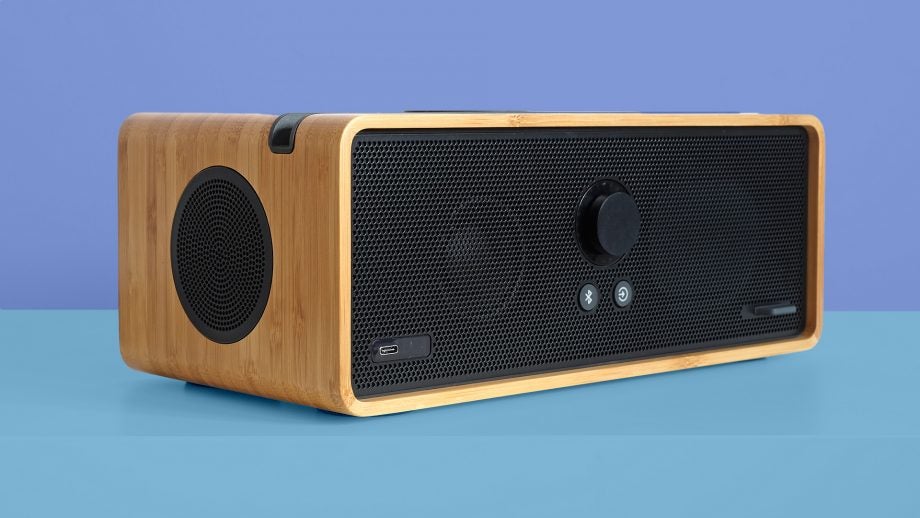
Verdict
Pros
- Packed with extra features
- Good sound quality
- Looks smart
Cons
- Airsound causes some audio issues
- No smart assistant support
- Some rivals at the price have bigger sound scale
Key Specifications
- Review Price: £399
- Wi-Fi and Bluetooth
- 3 x active drivers
- 3 x passive radiators
- Qi wireless charge pad
- Aux and optical inputs
- Tablet stand
What is the Orbitsound E30?
The Orbitsound E30 is a wireless speaker with a few unusual features. It will charge phones wirelessly, if they have Qi support, and features a normal USB charge port right there on its front. It has a ridge along its top to hold a tablet too.
However, the part of the E30 that Orbitsound seems most proud of is Airsound. This uses side-firing drivers to radically extend the speaker’s dispersal. It works – although it displays a few unwanted sonic side-effects with the odd song.
The Orbitsound E30 isn’t quite the best-sounding speaker in this class, then, but it does sound great and is worth buying if you’re a fan of its design and extra lifestyle features.
Related: Best Bluetooth speakers
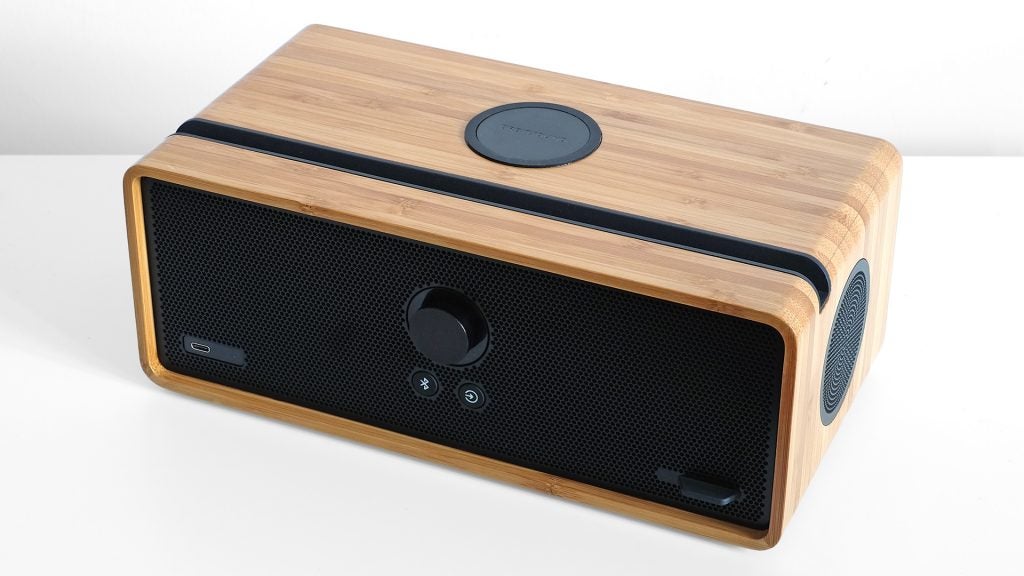
Orbitsound E30 – Features
Many new wireless speakers are designed for a reality that, for the majority, isn’t quite here yet. The Apple HomePod is a speaker for the smart home – an immaculate micro-tower of mesh with a wannabe HAL9000 display peeping out of its top.
The Orbitsound E30 is far more practical, however, catering for the way many of us live right here, right now. It won’t enable you to change the colour of your lights via voice command, or recite the ingredients in a recipe. But it will charge your phone and give you somewhere to rest your tablet, or even your phone, allowing you to watch an episode of Love Island while making a meal in your kitchen.
There’s something pleasantly down-to-earth about the Orbitsound E30.
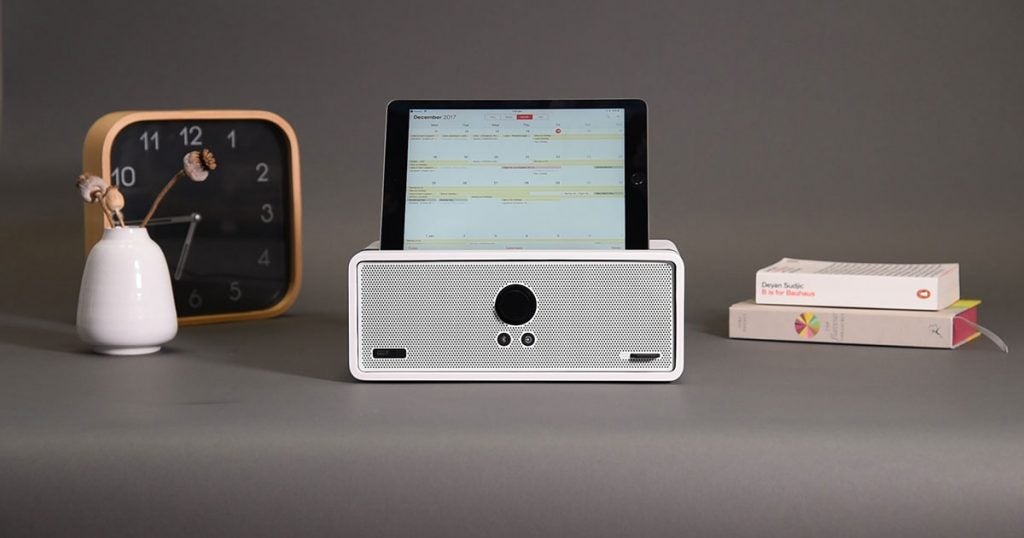
It also looks a little different to most current wireless speakers. It’s relatively flat and long, rather than a tower than tries to trim down its footprint as much as possible. Its look is similar to that of the Ruark R2 radio. There’s more tech at play in this device, however here.
The wireless charging plate sits on the top of the unit, the black circle bearing the Orbitsound logo. If your phone supports Qi charging, then you can use the E30 to charge it. Devices such as the iPhone X, iPhone 8 and iPhone 8 and the Samsung Galaxy S9, S9+, S8 and S8+ can be topped up via the E30.
It’s not the end of the world if your device doesn’t, though – you can charge your device using the USB port on the front of the Orbitsound E30. However, you may need to get hold of a new cable since the E30 has a USB-C socket. Most phone cables still terminate in a standard USB.
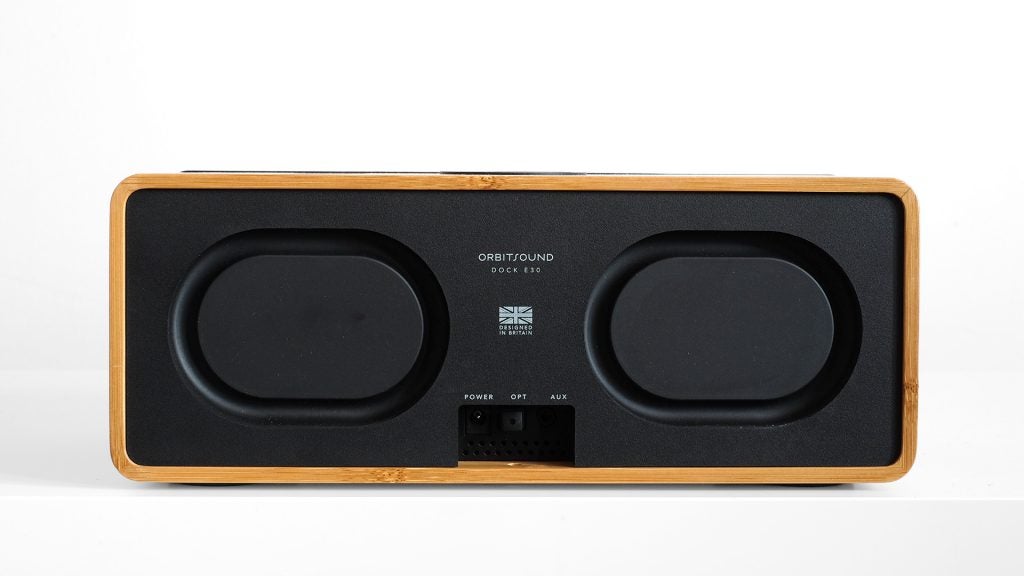
The Orbitsound E30 also has a couple of extra wired inputs on its rear: one optical and the other a normal 3.5mm socket. You could use these to plug in your TV.
A remote is included, too, which gives the E30 an even more classic home entertainment vibe. With this you can alter the volume, track and even the treble/bass.
In addition, the remote can ‘learn’ the volume controls of your TV’s remote, although this is the only function it will mimic. This can be achieved through the Orbitsound app.
Orbitsound includes enough odd little extras to make the E30 appear a truly different kind of speaker.
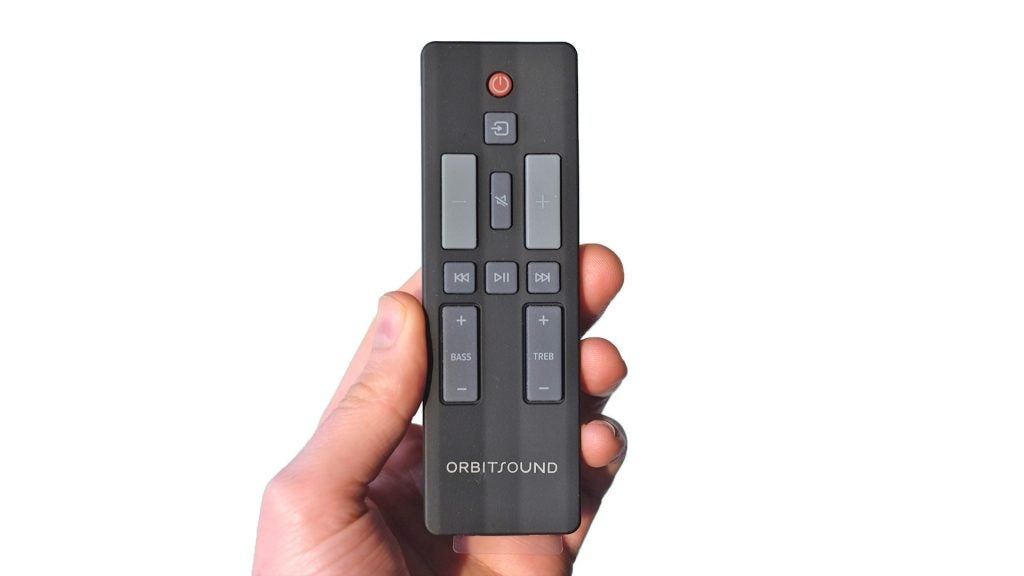
Orbitsound E30 – Design
This device’s appearance is quite charming. The most striking finish is the bamboo, which uses a laminate for a solid wood look. The E30 is also available in matte black and white.
A painted metal grille sits across the front of the Orbitsound E30, but this can be removed. A slight tug on the little rubbery part on the bottom-right of the grille will see it lift away; it’s held in place with magnets.
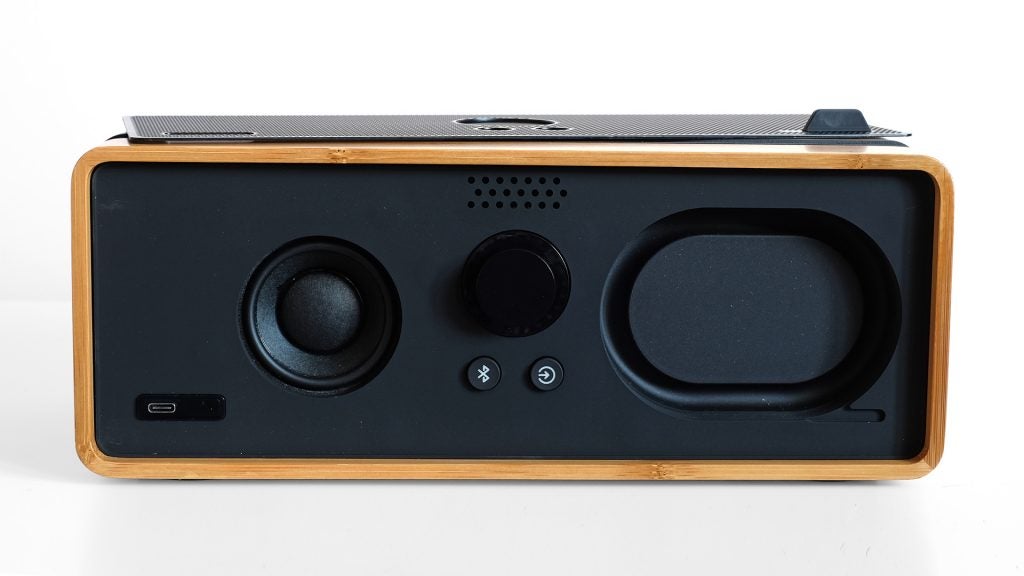
Behind the grille you’ll see the main driver and a large passive radiator. Hi-fi nerds may appreciate the exposed speaker cones, but since the layout lacks symmetry, in my opinion the Orbitsound E30 looks better with the grille in place.
With the grille in place, there’s a central volume knob on the front, around which LEDs fan to indicate the volume level, and two buttons below to start Bluetooth pairing and switch the mode used. The Orbitsound has Wi-Fi streaming and Bluetooth, and those wired inputs.
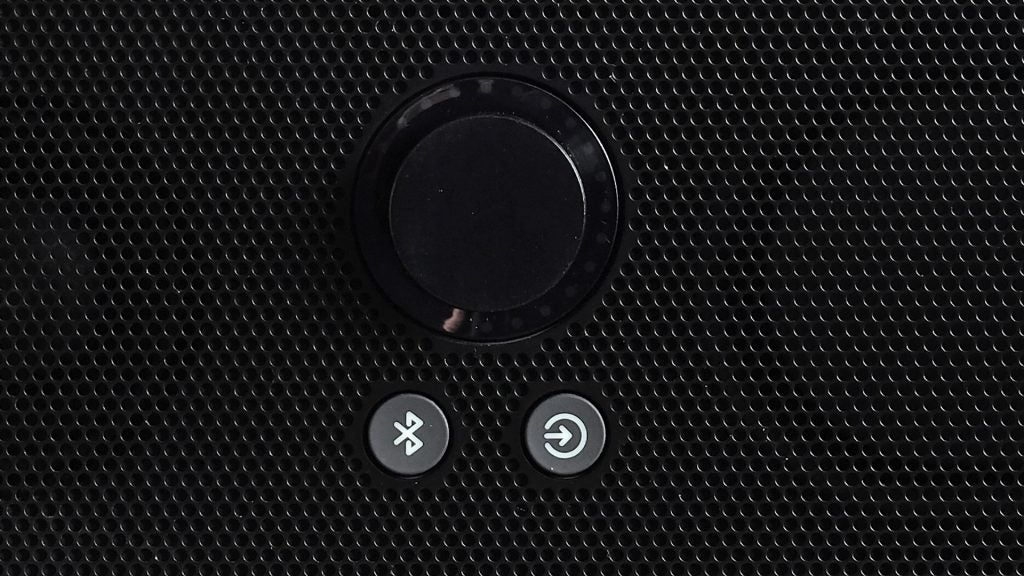
You can treat the E30 like a multiroom speaker using the Orbitsound app. However, I imagine most people will buy one Orbitsound E30 rather than an army of them. Bluetooth has a little less appeal here than in some rivals – the Harman Kardon Go+Play 2, for example – because there’s no battery inside. The Orbitsound E30 has to be plugged in all the time to work.
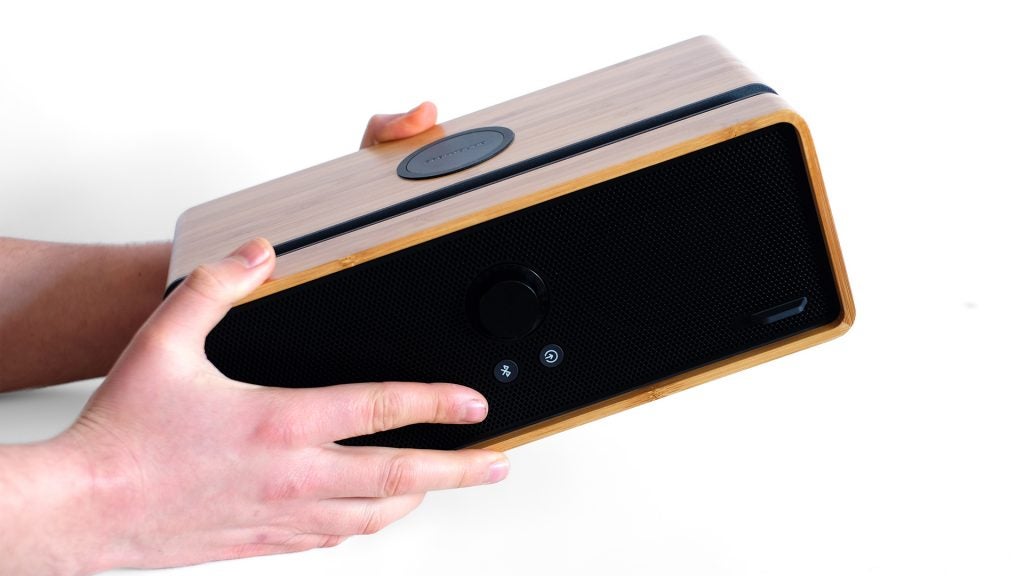
Orbitsound E30 – Sound quality
In order to ‘get’ the Orbitsound E30, you need to understand how Airsound works. This is a proprietary Orbitsound technology, and it is the reason you’ll find drivers on the side as well as the front of the device.
They fire sound out of the E30’s sides to create a much wider, more room-filling sound than you might expect from a relatively small speaker. The initial assumption is that the speaker looks at the stereo feed and splits it up into central and extreme left/right elements. However, this isn’t the case.
It’s more complicated, judging by the effect on the sound. The Orbitsound E30 listens out for ambient or surround parts of a mix, letting the side speakers act like virtual 5.1 surround sound satellites.
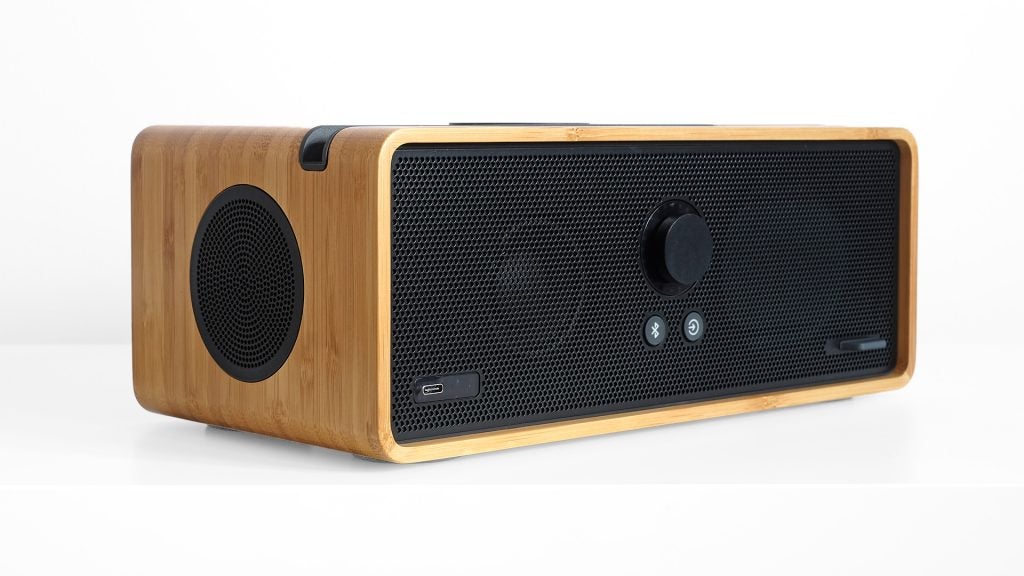
It’s a neat idea that should keep vocals front and centre in the mix. However, at times it gets things a little wrong. Occasionally, it might identify an airy-sounding reverb-laden vocal as an Airsound element, relegating it to the surround speakers. This makes it appear as if the singer is in another room.
Mid-heavy parts of an arrangement can also sound distorted if they end up played Airsound-style. Again, it spoils the overall sound of a song.
However, for the most part the Orbitsound E30’s Airsound is very effective at making the sound seem wider than the speaker itself. Just make sure you don’t sit to close to it, with one of the Airsound speakers pointing right at you: it doesn’t sound great, no matter the song.
If you do find a favourite song or album sets off these Airsound issues, you can turn the feature off – or lessen it, by holding down the two front buttons and turning the volume knob.
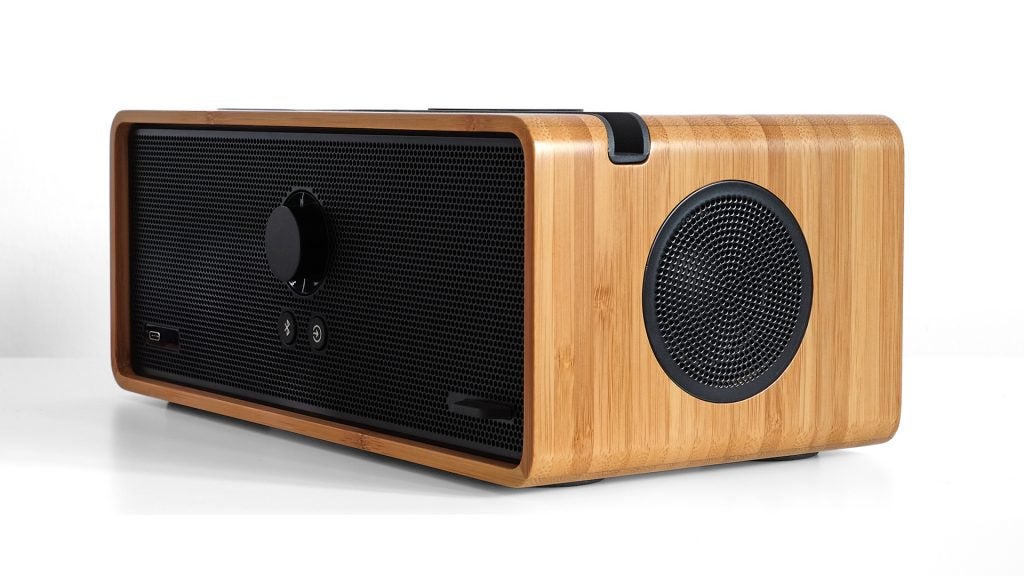
Aside from the niggles with the Airsound tech, the Orbitsound E30’s audio is great. It’s well balanced, has fairly powerful bass, the mids are well projected. Plus, the treble is clean and relatively smooth.
I’d be happy to use the Orbitsound E30 as my main casual music listening speaker. It’s only when it’s compared to some of the best in this class that the cracks become more apparent. Both the Sonos Play:5 and Harman/Kardon GO+Play 2 display better bass depth and greater sound scale. It’s the sound of bigger or more capable drivers. All the E30’s active drivers are quite small.
The part that cements the Orbitsound E30 as a good, rather than great, contender in this class is the mid-range detail. Compared to the Sonos Play:5 and Go+Play 2, there’s less consistent mid-range texture, which manifests as vocals sounding less detailed or full-bodied. That said, parts of the mids display great texture. The E30 is a good performer, just not quite a class-leader.

Why buy the Orbitsound E30?
The Orbitsound E30 is a solid lifestyle speaker. You get wireless, phone charging, multiroom if you want it, and a way to easily connect your TV or other gear.
It’s much less of a future-obsessed elitist than the Apple HomePod, although Apple’s speaker would still clinch this one for pure sound quality.
Orbitsound’s own special move is Airsound. It’s a neat soundstage-expanding idea, but doesn’t work well for near-field listening.
However, the combination of smart design, varied features and good general sound quality makes the Orbitsound E30 worth considering if you want a wireless speaker, not a smart home speaker.
Verdict
A solid, lifestyle-friendly wireless speaker.


